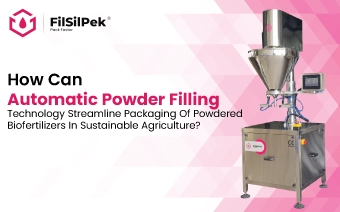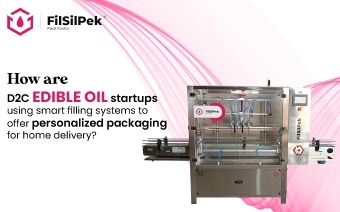How Automated Filling Systems Improve Lubricant Viscosity Management?
In industries that rely on high-performance machinery, maintaining the proper viscosity of lubricants is essential. Achieving the right viscosity ensures smooth operations, reduces wear, and helps prevent equipment failure. Traditionally, managing lubricant viscosity has been a labor-intensive process prone to errors. However, automated filling systems have revolutionized this, enhancing the precision, reliability, and efficiency of lubricant production and application.
Automated filling systems address the key challenges of viscosity management, providing real-time monitoring, improved accuracy, and operational consistency. Here’s how these systems are transforming the management of lubricant viscosity.
Challenges in Lubricant Viscosity Management
Understanding the obstacles involved in manual viscosity management helps in appreciating the value of automation:
- Temperature Sensitivity: Temperature fluctuations during production or storage can affect lubricant viscosity, compromising product quality and equipment performance.
- Accuracy in Additive Blending: Maintaining consistent ratios of base oils and additives is crucial. Even slight inaccuracies in manual processes can result in varying viscosity levels, which may impact machinery operations.
- Inconsistencies in Manual Operations: Manual filling processes are subject to human error, leading to improper viscosity levels and posing a risk to equipment due to suboptimal lubrication.
Given these complexities, automation provides a solution that not only mitigates these challenges but also optimizes production and performance.
How Automated Filling Systems Optimize Viscosity Management?
1. Precise Control Over Formulation
Automated systems excel at maintaining precise control over lubricant formulations. Advanced sensors and control software ensure that the required viscosity levels are monitored and adjusted in real-time. As a result, the formulation remains consistent, and the correct blend of base oils and additives is delivered with high accuracy.
This precise formulation control ensures consistent product quality, reducing the risk of equipment damage due to incorrect lubrication.
2. Ensuring Batch Consistency
One of the key strengths of automated filling systems is their ability to replicate exact processes, eliminating batch-to-batch variability. Unlike manual systems, which can introduce inconsistencies, automated systems follow predefined parameters for each batch, ensuring uniform viscosity across the production line.
This level of consistency is critical for industries where lubricant performance is directly tied to equipment reliability. Maintaining consistent viscosity across batches leads to smoother operations and extended equipment lifespans.
3. Real-Time Viscosity Monitoring
Automated filling systems equipped with sensors can monitor the viscosity of lubricants in real time. This allows for immediate adjustments if there are any deviations from the desired viscosity range due to temperature shifts or formulation inconsistencies.
Rather than reacting to problems after they occur, these systems proactively ensure that the lubricant viscosity remains within optimal limits throughout the production process.
This approach minimizes the risk of equipment breakdowns and maximizes operational efficiency.
4. Reducing Material Waste
Automation ensures the precise use of lubricant, preventing overfilling or underfilling, which can occur in manual processes. Minimizing waste not only reduces the cost of materials but also leads to more efficient production cycles. With automated systems, manufacturers can optimize the amount of lubricant used, leading to cost savings and improved sustainability.
The reduction in waste also helps to avoid excess disposal costs and ensures that fewer resources are consumed during production.
5. Up to date Safety and Regulatory Compliance
The automation of the filling process limits human exposure to potentially hazardous chemicals, enhancing worker safety. Automated systems ensure that production is carried out in a controlled environment, reducing the risks associated with manual handling of lubricants.
Additionally, these systems help maintain compliance with industry safety standards and regulatory requirements. Ensuring that lubricants consistently meet specified viscosity levels guarantees that companies adhere to the necessary guidelines, minimizing the risk of non-compliance
6. Superior Productivity and Efficiency
Automated filling systems significantly boost productivity by streamlining the filling and viscosity management processes. Increased speed and accuracy allow manufacturers to produce more lubricant in less time without compromising on quality. The likelihood of human error is greatly reduced, which in turn decreases downtime due to faulty formulations or equipment malfunctions.
This leads to smoother production cycles and fewer interruptions, helping companies meet production targets more effectively.
Conclusion
Automated filling systems offer a powerful solution for optimizing lubricant viscosity management. Through precise control, real-time monitoring, and enhanced consistency, these systems address the challenges faced in manual processes, ensuring that lubricants meet exacting standards and perform reliably in machinery.
For industries reliant on consistent lubricant performance, automated systems provide the tools needed to ensure high-quality production, reduce material waste, and increase operational efficiency. The adoption of automated filling technology is becoming increasingly necessary to stay competitive in a demanding market, offering long-term benefits in terms of cost savings, equipment longevity, and improved safety.
Want to know more about automated filling systems and how they handle the viscosity in your business? – Drop us a line at [email protected] or just call our experts now.
How can automatic powder filling technology streamline packaging of powdered biofertilizers in sustainable agriculture?
The demand for biofertilizers has increased sharply as agriculture moves toward….
What new challenges arise in packaging high-value cosmetic oils extracted from food-grade raw materials, and how do filling machines adapt?
High-value cosmetic oils like argan, almond, jojoba, avocado….
How are D2C edible oil startups using smart filling systems to offer personalized packaging for home delivery?
Direct-to-consumer (D2C) edible oil brands are changing the way households buy and use cooking oils. By cutting….



